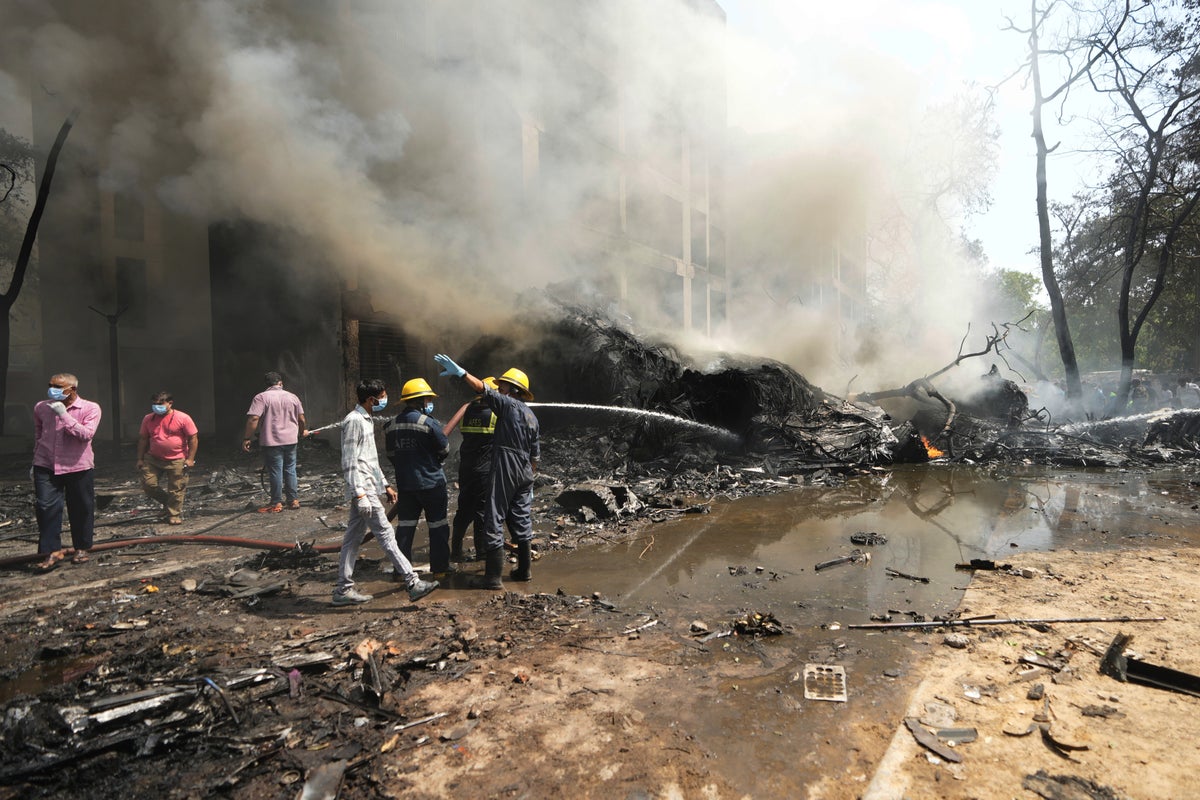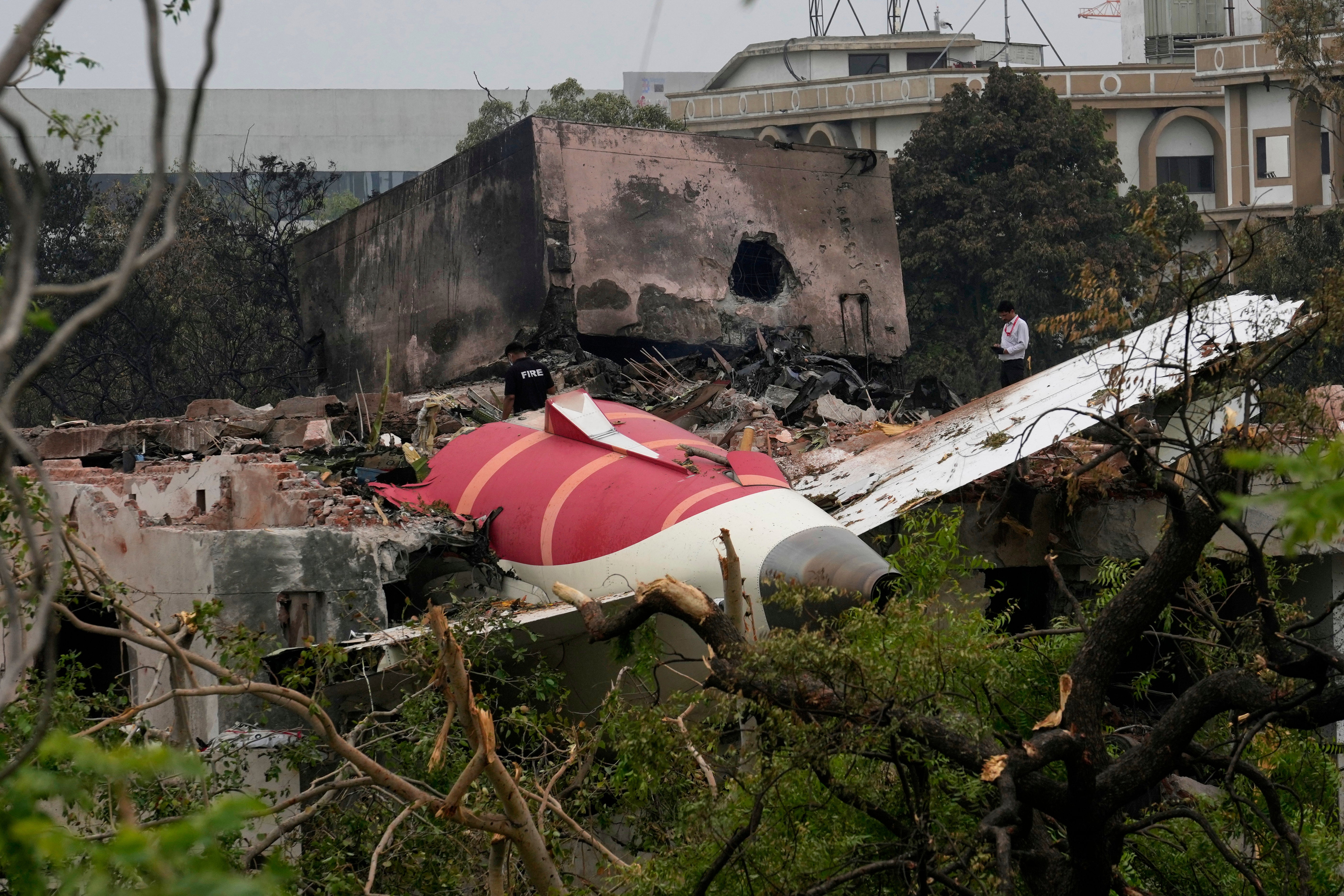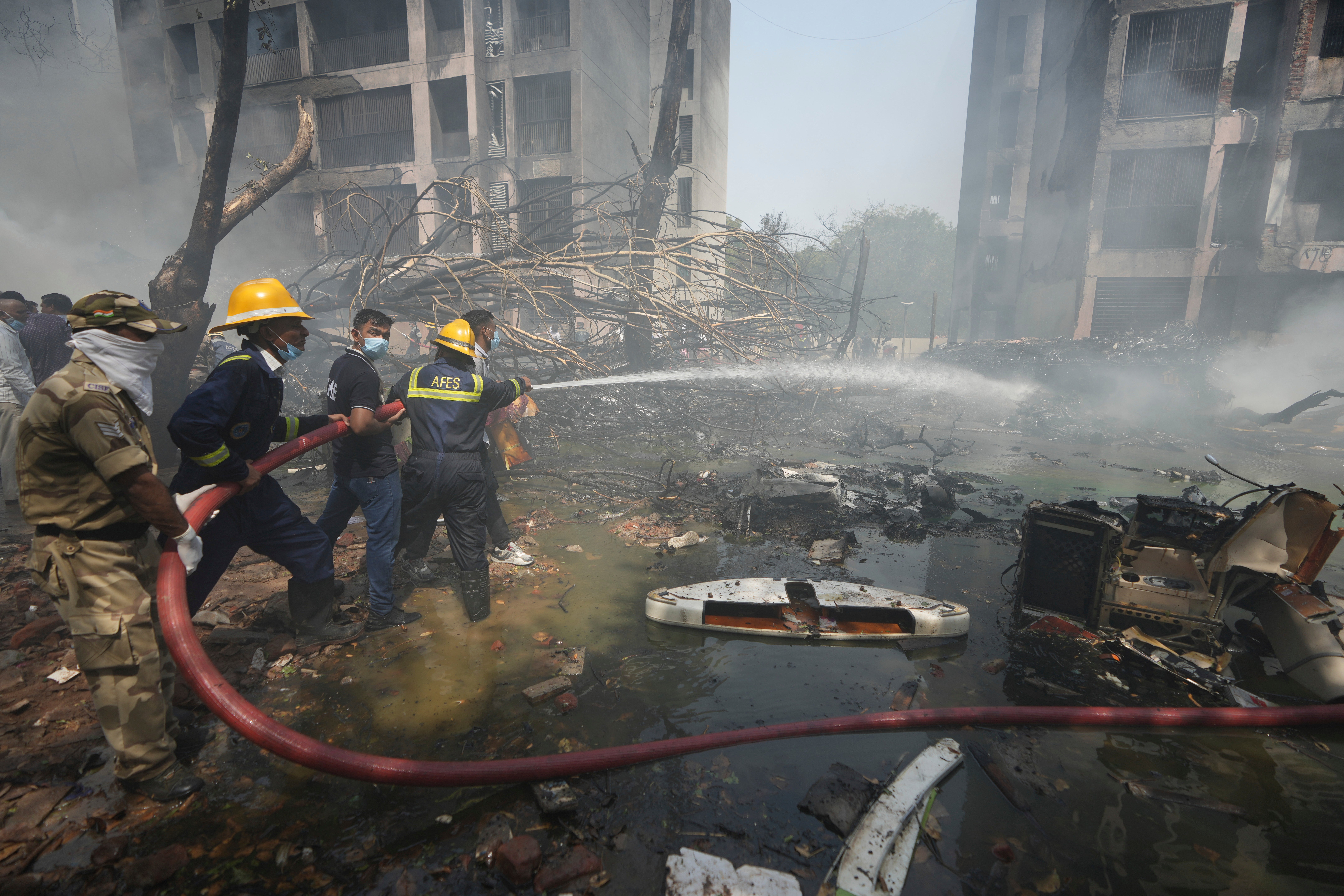Why did the Air India flight crash? Here’s how experts will investigate the disaster in Ahmedabad
Speculation is rife about the causes of the disaster, as experts begin to piece together how flight AI171 crash unfolded

Investigators in India are working to identify the cause of the Air India plane crash that killed all but one of the 242 passengers on board on Thursday 12 June. Dozens of people on the ground also died. It was the first fatal crash involving the Boeing 787 Dreamliner.
The flight, which had been bound for London Gatwick, came down shortly after taking off from the western city of Ahmedabad. According to Flightradar24, the aircraft departed at 08:08:44 GMT (1.38pm local time) from runway 23 and climbed only a few hundred feet before crashing less than a minute later.
With speculation rife about the cause of the disaster, Indian safety experts have been joined by teams from the UK Air Accidents Investigation Branch (AAIB) and US National Transportation Safety Board (NTSB) to work out what happened as the disaster on flight AI171 unfolded.
Both “black boxes” – the flight data recorder and cockpit voice recorder – have been recovered from the wreckage. The information they contain will help investigators piece together the doomed flight and determine the causes. The investigators will gather evidence from air-traffic control, radar, CCTV and observers to understand what factors were involved in the accident. They will also talk to the sole survivor, Vishwas Kumar Ramesh, about what he recalls during the crash.

Lessons on how to improve safety in future will be shared with the aviation community. A preliminary report is expected in about three months. If there is evidence of a previously unknown problem that could jeopardise the safety of other aircraft, they will announce their initial conclusions as soon as possible.
As always in the early stages of an investigation, aviation safety experts will consider a wide spectrum of possible contributory factors. These are the key areas they will be studying.
Mechanical issues
Was there some kind of failure, possibly involving loss of power, that left the pilots helpless to control their aircraft in the crucial seconds after take off? Philip Baum, visiting professor of aviation security at Coventry University told The Independent it “seems likely” the accident was caused by system or multiple systems failures.
The available evidence appears compatible with both engines simultaneously losing thrust at or close to take-off.
India’s Directorate General of Civil Aviation (DGCA) has ordered Air India to carry out checks on its Boeing 787 aircraft equipped with GEnx engines – as fitted to the plane that crashed – “with immediate effect”. The checks include fuel and engine control systems. But it is noteworthy that the directive is solely aimed at Air India, perhaps indicating that the invesigators have not found a fundamental problem with the aircraft or its engines.
Some attention is being paid in the wider aviation community to Boeing’s “thrust control malfunction accommodation” (TCMA) system. This software is designed automatically to shut down an engine in a case of “uncontrolled high thrust” – when it suddenly goes to high power without pilot input, or stays on high power despite being commanded to idle. Interest is heightened because of Boeing’s “maneuvering characteristics augmentation system” (MCAS), whose flawed design triggered two fatal crashes involving the Boeing 737 Max.
Bird strike
Twin-engined aircraft like the Boeing 787 are engineered to be able to take off on a single engine, even if a bird strike happens at the worst possible moment. But if both engines fail, the pilots have no way to recover the situation.
In the ‘Miracle on the Hudson’ plane crash in 2009, a US Airways aircraft flew into a flock of birds shortly after take off from New York’s La Guardia airport. Both engines lost power. On that occasion, the plane had gained sufficient altitude to glide. The pilots were able to ditch the Airbus A320 in the Hudson River between Manhattan and New Jersey, with all on board surviving.
At Ahmedabad, simultaneous bird strikes might have put both engines out of action as the Air India aircraft climbed.

Human factors
At this stage in the investigation, it would be quite wrong to attribute any blame to the captain or first officer. But investigators will be looking at how the flight crew worked during the tragically short flight of Air India flight AI171.
Taking off with a heavy load of fuel, passengers and cargo in hot weather is challenging at the best of times. Could these highly trained pilots have made decisions and taken actions that jeopardised the safety of the aircraft?
A captain for a leading US carrier told The Independent some focus should be given to the flap settings for “a heavy airplane on a hot day”. The flaps are the moveable panels on an aircraft’s wings that, when extended, reduce the stall speed. In other words, the plane can take off and climb at a lower speed than would be necessary without the flaps.
The pilot said that an incorrect setting could have resulted in “poor performance which ultimately may have led to a stall”.
In 2008, 154 passengers and crew aboard a Spanair flight from Madrid to Las Palmas died when the plane crashed immediately after take off. The investigation found that the pilots had failed to deploy the flaps for departure, and the take-off warning system failed to sound.
Investigators will assess evidence from the two black boxes recovered from the Air India aircraft. They will:
They will also delve into the background and health of the crew, and the actions of staff on the ground – including air-traffic controllers – as the aircraft prepared to depart.

Malicious act
Tragically, over the years individuals and groups have repeatedly downed aircraft for reasons ranging from grudges to terrorism. But Professor Baum said it was “unlikely there was anything more sinister at play”.
Should passengers worry about flying on Air India or the Boeing 787?
No. Air India is a highly professional airline with a strong safety culture. Until this crash, the Boeing 787 Dreamliner had delivered more than one billion passengers safely to their destinations.
In the absence of evidence, speculation has become so intense that moderators at the respected PPRuNe (Professional Pilots’ Rumour Network) shut down the online thread about the crash within four days.
One of the moderators wrote: “This thread has become a hamsterwheel of repetition and guesswork mixed in with nuggets of information and professionalism. Until we have the time and ability to sort out which is which, it will be closed.”

 Lynk
Lynk 






























